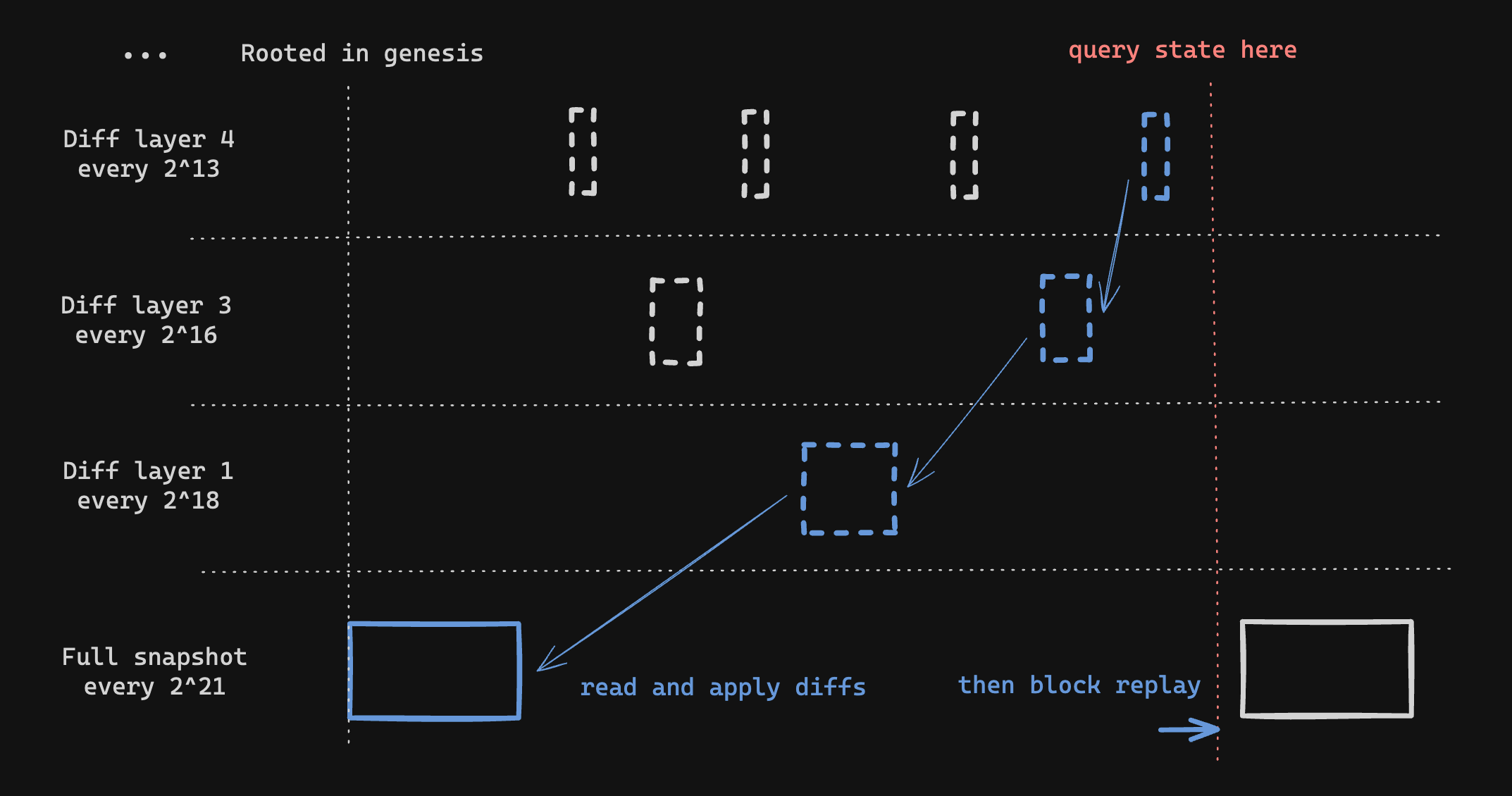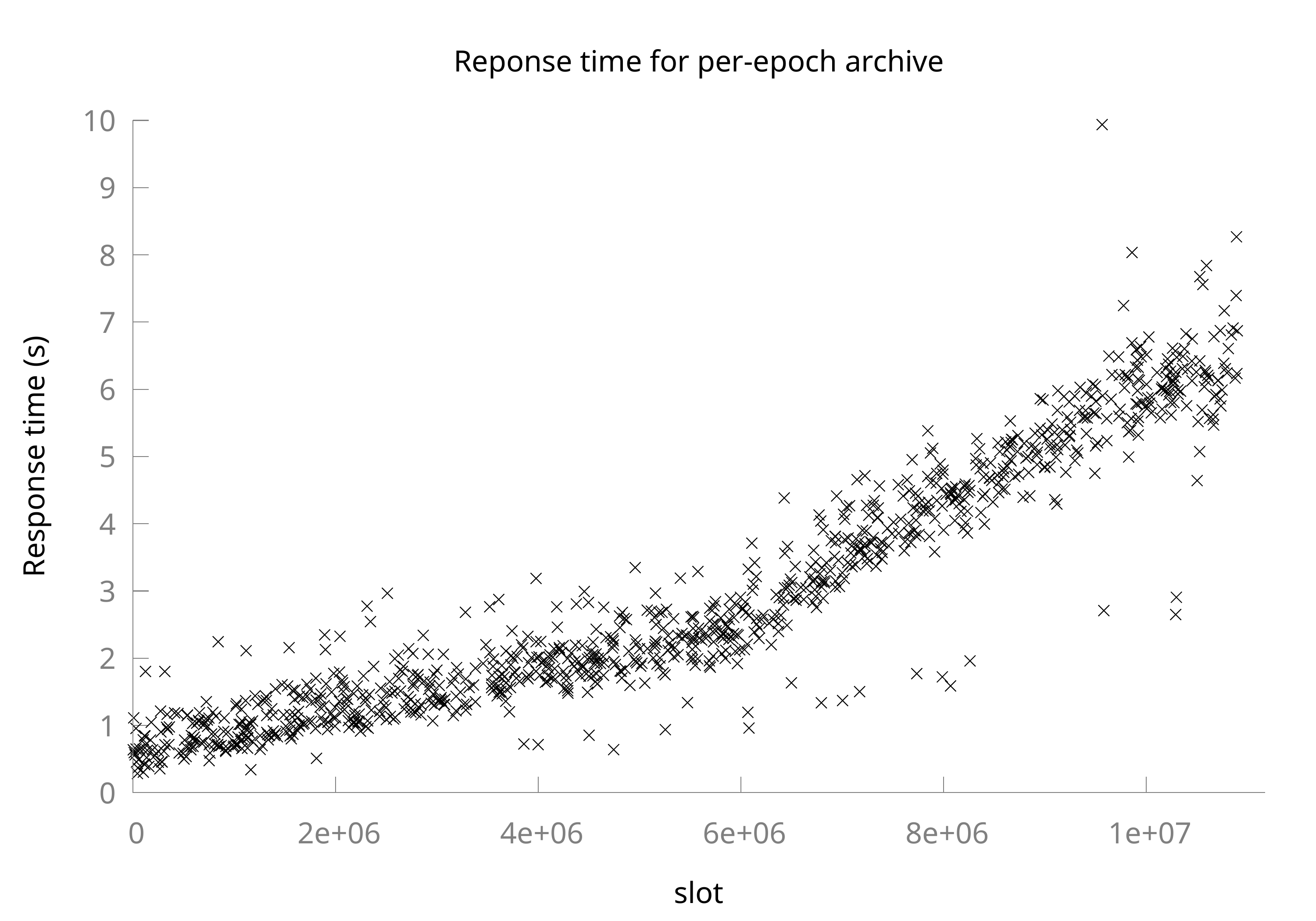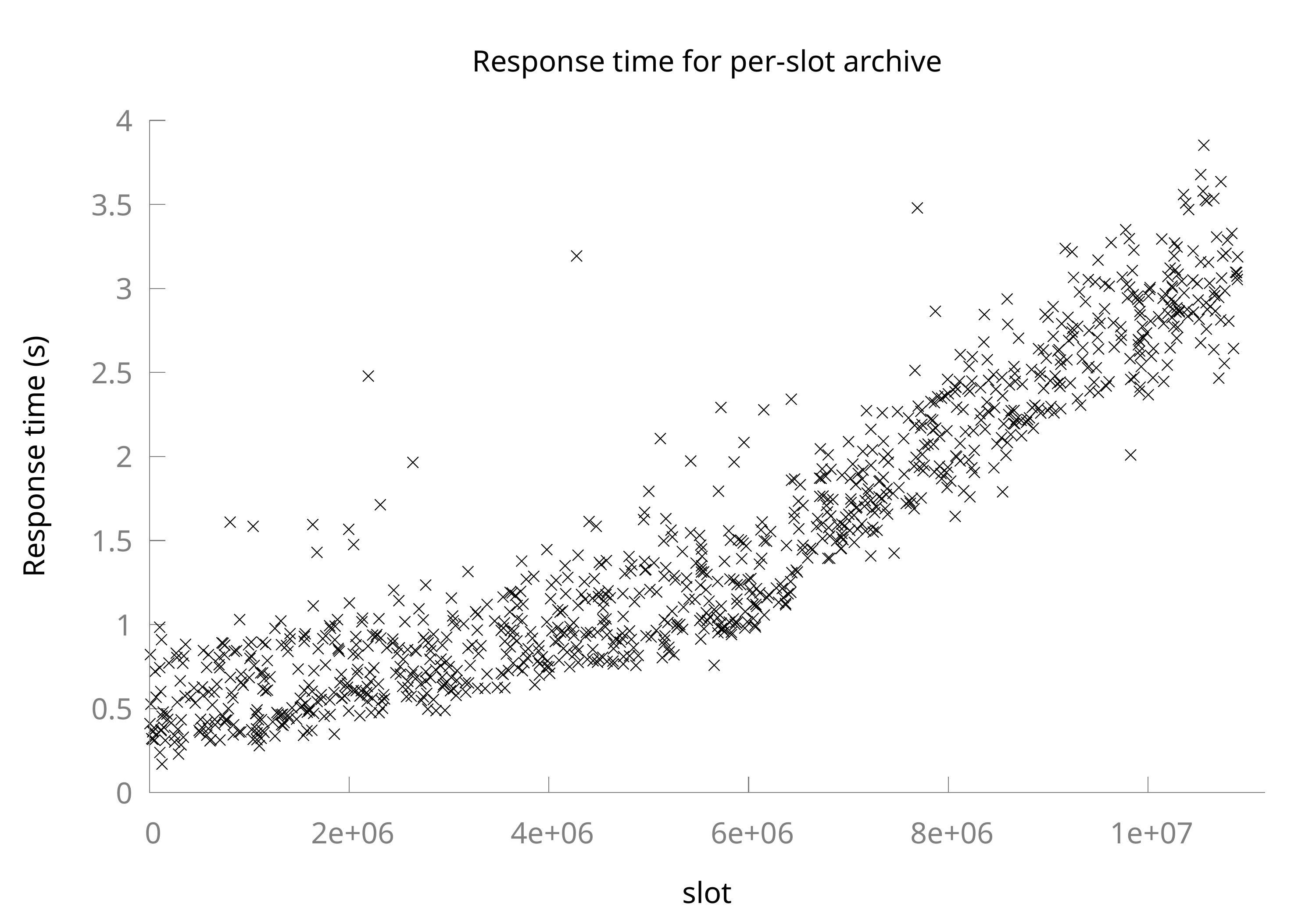Database Configuration
Lighthouse uses an efficient “split” database schema, whereby finalized states are stored separately from recent, unfinalized states. We refer to the portion of the database storing finalized states as the freezer or cold DB, and the portion storing recent states as the hot DB.
In both the hot and cold DBs, full BeaconState data structures are only stored periodically, and
intermediate states are reconstructed by quickly replaying blocks on top of the nearest state. For
example, to fetch a state at slot 7 the database might fetch a full state from slot 0, and replay
blocks from slots 1-7 while omitting redundant signature checks and Merkle root calculations. In
the freezer DB, Lighthouse also uses hierarchical state diffs to jump larger distances (described in
more detail below).
The full states upon which blocks are replayed are referred to as snapshots in the case of the freezer DB, and epoch boundary states in the case of the hot DB.
The frequency at which the hot database stores full BeaconStates is fixed to one-state-per-epoch
in order to keep loads of recent states performant. For the freezer DB, the frequency is
configurable via the --hierarchy-exponents CLI flag, which is the topic of the next section.
Hierarchical State Diffs
Since v6.0.0, Lighthouse’s freezer database uses hierarchical state diffs or hdiffs for short. These diffs allow Lighthouse to reconstruct any historic state relatively quickly from a very compact database. The essence of the hdiffs is that full states (snapshots) are stored only around once per year. To reconstruct a particular state, Lighthouse fetches the last snapshot prior to that state, and then applies several layers of diffs. For example, to access a state from November 2022, we might fetch the yearly snapshot for the start of 2022, then apply a monthly diff to jump to November, and then more granular diffs to reach the particular week, day and epoch desired. Usually for the last stretch between the start of the epoch and the state requested, some blocks will be replayed.
The following diagram shows part of the layout of diffs in the default configuration. There is a
full snapshot stored every 2^21 slots. In the next layer there are diffs every 2^18 slots which
approximately correspond to “monthly” diffs. Following this are more granular diffs every 2^16
slots, every 2^13 slots, and so on down to the per-epoch diffs every 2^5 slots.

The number of layers and frequency of diffs is configurable via the --hierarchy-exponents flag,
which has a default value of 5,9,11,13,16,18,21. The hierarchy exponents must be provided in order
from smallest to largest. The smallest exponent determines the frequency of the “closest” layer
of diffs, with the default value of 5 corresponding to a diff every 2^5 slots (every epoch).
The largest number determines the frequency of full snapshots, with the default value of 21
corresponding to a snapshot every 2^21 slots (every 291 days).
The number of possible --hierarchy-exponents configurations is extremely large and our exploration
of possible configurations is still in its relative infancy. If you experiment with non-default
values of --hierarchy-exponents we would be interested to hear how it goes. A few rules of thumb
that we have observed are:
- More frequent snapshots = more space. This is quite intuitive - if you store full states more
often then these will take up more space than diffs. However what you lose in space efficiency you
may gain in speed. It would be possible to achieve a configuration similar to Lighthouse’s
previous
--slots-per-restore-point 32using--hierarchy-exponents 5, although this would use a lot of space. It’s even possible to push beyond that with--hierarchy-exponents 0which would store a full state every single slot (NOT RECOMMENDED). - Less diff layers are not necessarily faster. One might expect that the fewer diff layers there
are, the less work Lighthouse would have to do to reconstruct any particular state. In practice
this seems to be offset by the increased size of diffs in each layer making the diffs take longer
to apply. We observed no significant performance benefit from
--hierarchy-exponents 5,7,11, and a substantial increase in space consumed.
The following table lists the data for different configurations. Note that the disk space requirement is for the chain_db and freezer_db, excluding the blobs_db.
| Hierarchy Exponents | Storage Requirement | Sequential Slot Query | Uncached Query | Time to Sync |
|---|---|---|---|---|
| 5,9,11,13,16,18,21 (default) | 418 GiB | 250-700 ms | up to 10 s | 1 week |
| 5,7,11 (frequent snapshots) | 589 GiB | 250-700 ms | up to 6 s | 1 week |
| 0,5,7,11 (per-slot diffs) | 2500 GiB | 250-700 ms | up to 4 s | 7 weeks |
Jim has done some experiments to study the response time of querying random slots (uncached query) for --hierarchy-exponents 0,5,7,11 (per-slot diffs) and --hierarchy-exponents 5,9,11,13,17,21 (per-epoch diffs), as show in the figures below. From the figures, two points can be concluded:
- response time (y-axis) increases with slot number (x-axis) due to state growth.
- response time for per-slot configuration in general is 2x faster than that of per-epoch.
In short, setting different configurations is a trade-off between disk space requirement, sync time and response time. The data presented here is useful to help users choosing the configuration that suit their needs.
We acknowledge the data provided by Jim and his consent for us to share it here.


If in doubt, we recommend running with the default configuration! It takes a long time to reconstruct states in any given configuration, so it might be some time before the optimal configuration is determined.
CLI Configuration
To configure your Lighthouse node’s database, run your beacon node with the --hierarchy-exponents flag:
lighthouse beacon_node --hierarchy-exponents "5,7,11"
Historic state cache
Lighthouse includes a cache to avoid repeatedly replaying blocks when loading historic states. Lighthouse will cache a limited number of reconstructed states and will re-use them when serving requests for subsequent states at higher slots. This greatly reduces the cost of requesting several states in order, and we recommend that applications like block explorers take advantage of this cache.
The historical state cache size can be specified with the flag --historic-state-cache-size (default value is 1):
lighthouse beacon_node --historic-state-cache-size 4
Note: Use a large cache limit can lead to high memory usage.
Glossary
- Freezer DB: part of the database storing finalized states. States are stored in a sparser format, and usually less frequently than in the hot DB.
- Cold DB: see Freezer DB.
- HDiff: hierarchical state diff.
- Hierarchy Exponents: configuration for hierarchical state diffs, which determines the density of stored diffs and snapshots in the freezer DB.
- Hot DB: part of the database storing recent states, all blocks, and other runtime data. Full states are stored every epoch.
- Snapshot: a full
BeaconStatestored periodically in the freezer DB. Approximately yearly by default (every ~291 days). - Split Slot: the slot at which states are divided between the hot and the cold DBs. All states from slots less than the split slot are in the freezer, while all states with slots greater than or equal to the split slot are in the hot DB.